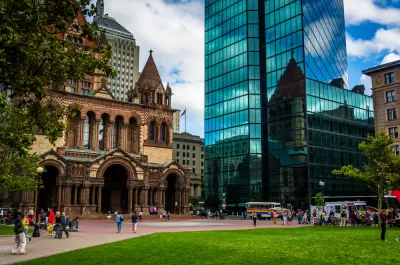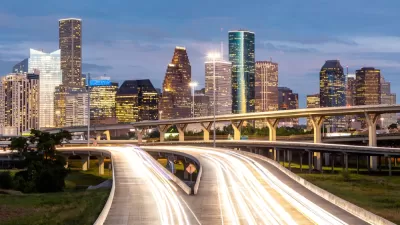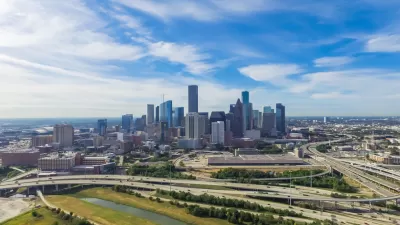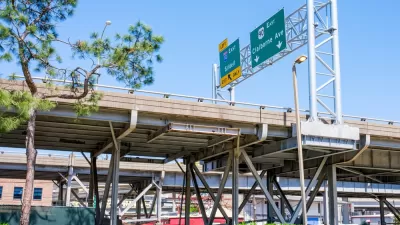Fifty years ago, Governor Francis W. Sargent nixed a proposed expressway and set in motion a transportation future for Boston that would be remarkably different from many other U.S. cities.

In an article for the Boston Globe, Danny McDonald describes the long-lasting impact of a decision made half a century ago by Massachusetts Governor Francis W. Sargent.
As McDonald explains, “Fifty years ago last week, Governor Francis W. Sargent killed the Southwest Expressway, an 8-mile extension of Interstate 95 from Canton to the South End.” This fateful decision “helped Boston maintain its feel, that it preserved an inner core of neighborhoods that the highway would have been irreversibly sliced up.”
According to experts, the decision also helped guide other Boston infrastructure projects, such as the Ted Williams Tunnel.
Indeed, it’s hard to overstate the impact that Sargent’s decision had on modern Greater Boston. Today, part of the proposed highway-that-never-was is the Southwest Corridor Park, a treasured 4-mile greenway that stretches from the Back Bay to Forest Hills in Jamaica Plain. The old elevated Orange Line along Washington Street was torn down and relocated to the former highway corridor, which led to the renewal of neighborhoods in the South End and Jamaica Plain.
Sargent’s decision came after intense opposition from local community activists who feared the impact of the proposed expressway. And while it preserved many Boston neighborhoods, over 500 homes and businesses were demolished to make way for the highway before the project was canceled. But many credit it for setting Boston up for a less car-oriented future than many other American cities.
FULL STORY: Transformative decision a half-century ago to scrap I-95 extension still resonates in Boston today

Alabama: Trump Terminates Settlements for Black Communities Harmed By Raw Sewage
Trump deemed the landmark civil rights agreement “illegal DEI and environmental justice policy.”

Planetizen Federal Action Tracker
A weekly monitor of how Trump’s orders and actions are impacting planners and planning in America.

The 120 Year Old Tiny Home Villages That Sheltered San Francisco’s Earthquake Refugees
More than a century ago, San Francisco mobilized to house thousands of residents displaced by the 1906 earthquake. Could their strategy offer a model for the present?

Ken Jennings Launches Transit Web Series
The Jeopardy champ wants you to ride public transit.

BLM To Rescind Public Lands Rule
The change will downgrade conservation, once again putting federal land at risk for mining and other extractive uses.

Indy Neighborhood Group Builds Temporary Multi-Use Path
Community members, aided in part by funding from the city, repurposed a vehicle lane to create a protected bike and pedestrian path for the summer season.
Urban Design for Planners 1: Software Tools
This six-course series explores essential urban design concepts using open source software and equips planners with the tools they need to participate fully in the urban design process.
Planning for Universal Design
Learn the tools for implementing Universal Design in planning regulations.
Clanton & Associates, Inc.
Jessamine County Fiscal Court
Institute for Housing and Urban Development Studies (IHS)
City of Grandview
Harvard GSD Executive Education
Toledo-Lucas County Plan Commissions
Salt Lake City
NYU Wagner Graduate School of Public Service





























